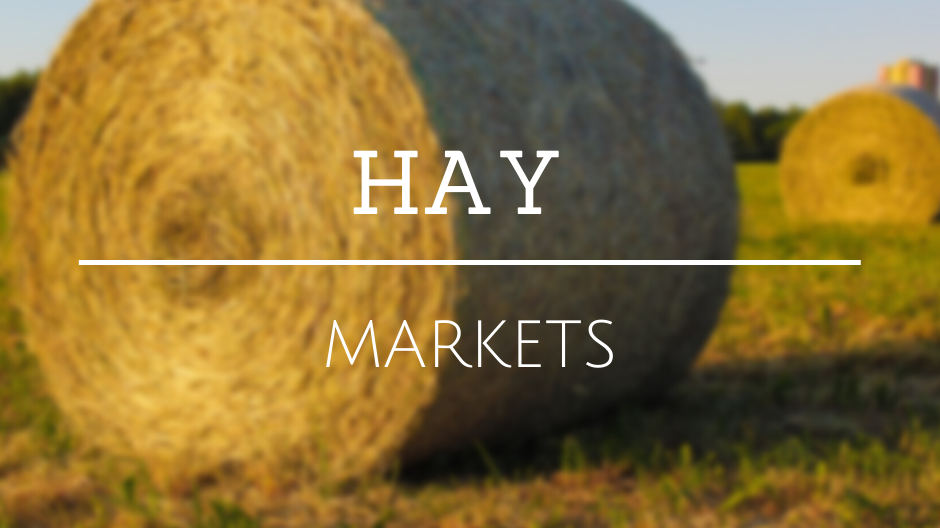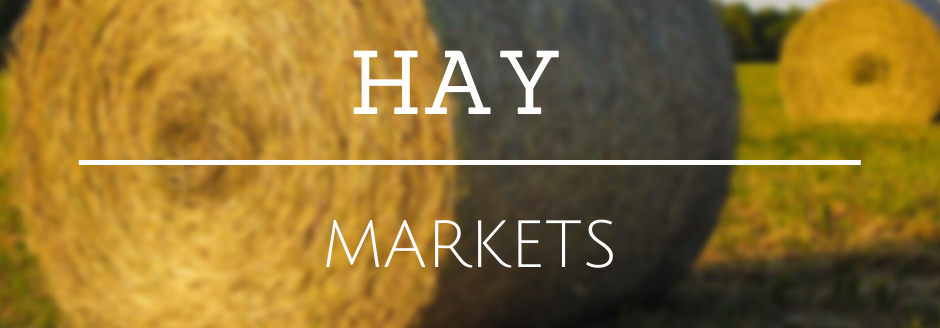Colorado – In the Aug. 4 report, compared to last report, trade activity and demand has softened. Hay trades are slow as second cutting is well underway across the state. Areas that have received a lot of rain since mid May have created challenges in putting up hay that will test. Later cut alfalfa with low test is going to be moving into the grinder markets. Producers have struggled to put up hay without any rain on it. According to Colorado Crop Progress report, alfalfa hay second cutting is 60% complete and third cutting is 10% compete.
Missouri – In the Aug. 3 report, compared to last report, the supply is light and hay prices are steady. The state is far from waist high grass and bin busting crops but a large portion of the state received several inches of moisture this week with many areas seeing totals of 4 to 8 inches since the last report and a few small areas pushing 10. Pastures will take more moisture and time before conditions really improve but hope exist now at least. In the meantime the hay market remains strong and movement is brisk.
Nebraska – In the Aug. 3 report, compared to last report, bales of alfalfa sold steady to $10 lower. Grass hay sold unevenly steady. Ground and delivered hay in the east and west sold steady, the Platte Valley sold $20 lower on strait alfalfa and $10 lower on ground and delivered cornstalks. Dehydrated alfalfa pellets sold steady. Demand was light for alfalfa hay with moderate demand for grass hay. Rains showers continue across many areas of the state aiding in forage growth but on the flip side the rain has damage several acres of mowed hay that producers can not get baled resulting in large quantity of poor quality of hay. Some areas in the east seem like they can not buy a rain and continue to put up top quality feed.
Oklahoma – In the Aug. 4 report, compared to the last report, drought is beginning to set back into parts of our state. The second or third cutting is harvesting just a quarter or half of the previous cuttings of hay. Oklahoma is in need of some scattered rain showers once again, along with cooler temperatures. In the central part of Oklahoma trades are good, while demand is moderate to light demand. In western areas, trades are slow, and the demand is light. Barns are full of hay. The eastern part of Oklahoma is seeing good trade and the demand is high. Hay is being sold as soon as it is bailed in the field. Drought is in site once again. Which is causing the demand to rise. Next report will be released Aug. 18.
Texas – In the July 28 report, compared to the last report, hay prices are steady to $15 lower with the largest decreases in price noted in the Panhandle and west. Trading activity was moderate on moderate to good demand. Pasture and rangeland conditions are beginning to diminish some as a result of hot and dry conditions across most of the state. As a result, buyer demand has increased for hay as supplemental feeding has begun to take place in some regions and producers are more willing to stock up for the fall. However, prices have come down in the Panhandle and the western regions hay production has increased from the previous year. Additionally, hay has begun moving into the state from Colorado, New Mexico and Kansas with freight being the major factor on price. Next report will be released Aug. 11.
South Dakota – In the Aug. 4 report, compared to last report, alfalfa and grass hay steady. Very good demand remains for all types and qualities of hay. Grass hay tonnage has been reduced in the western half of the state due to the drought conditions. Western areas remain out of drought but it’s a very different situation east of the Missouri river. Alfalfa producers trying to make a third cutting have had a difficult time with high humidity levels. Drought conditions intensified this week as temps have continued hot. Row crops showing severe stress in these areas.
New Mexico – In the Aug. 4 report, compared to last report, alfalfa hay steady. Trade active, demand good. Alfalfa hay is at 80% finished with 2nd cutting. Most hay producers in the southern part of the state are finishing their third cutting and starting fourth cutting, 29% of third cut is finished through out the reminder of the New Mexico. The northern part of the state is in the second cutting. Hay and roughage supplies were reported as 35% very short, 39% short, 24% adequate, and 2% surplus. Stock water supplies were reported as 31% very short, 39% short, and 30% adequate.
Wyoming – In the Aug. 3 report, compared to last report, forage products sold unevenly steady. Demand was light. Spotty rain showers with a chance for torrential rain showers in different areas of the state. Many concerned farmers that heavy rain will damage the soon-to-be harvest barley. All hope it doesn’t sprout in the field. A lot of utility and fair quality hay in the market some are getting it sold others have it priced to high and continue to sit on asking levels. It’s hard to come down on price when all other fixed cost has jumped up by leaps and bounds.
Montana – In the Aug. 4 report, compared to last report, local demand for hay is light, while out of state demand was mostly moderate to good. Very few large sales were seen over the past two weeks as producers and buyers remain at odds on price. Many ranchers have stated they wont need to buy much if any hay this year as many of them have put up enough of their own hay. Most of the high quality hay is being shipped out of the state or is staying local and selling to horse owners in small quantities. Second cutting is wrapping up as a stint of good weather helped producers put up hay. Some of the hay in the report below was second cutting. Demand for straw is moderate. Asking prices are mostly $60 to $75 FOB for barley. Next report will be released Aug. 18.

